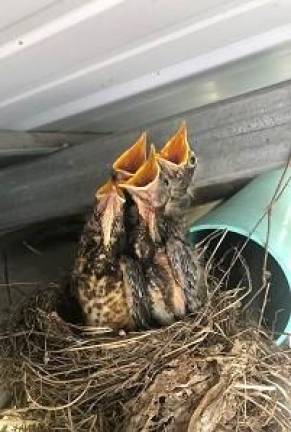As spring moves into full bloom, nature lovers might encounter young or newborn wild animals.
While a baby animal might appear abandoned, it is much more likely that a parent is in the area or the individual is an independent juvenile. Please do not touch a wild baby animal – call your regional DEC office or a licensed wildlife rehabilitator if you are concerned for its well-being.
Many wildlife parents leave their young in a safe place, where they instinctively remain quiet and still to avoid detection by predators. The parents return periodically (sometimes only a few times within 24 hours) to feed the young. Fawns, cottontail rabbits, and fledgling birds are the most common species that are mistakenly “rescued” by people thinking that the animals have been abandoned. Unfortunately, this leads to the death of many young animals, as wildlife is difficult to raise in captivity.
It is also illegal to rehabilitate or keep wildlife in captivity without a license.
If you come across a young, wild animal on its own, the best thing to do is leave it where it is and observe from a distance. The parents may not approach their young if they sense you in the vicinity.
Additionally, DEC reminds the public that young wildlife are not pets. Keeping wildlife in captivity is illegal and harmful to the animal. Wild animals are not well-suited to life in captivity and may carry diseases that can be harmful to humans.
